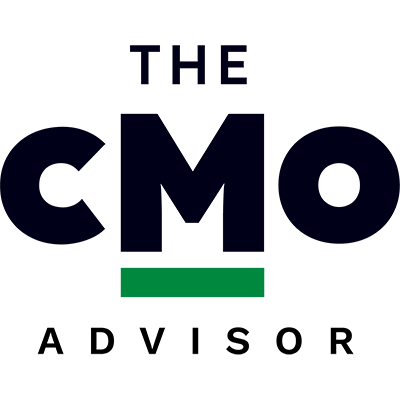For many marketers, "free time" has become a forgotten concept, a mythical beast relegated to "Once upon a time." To alleviate a portion of the workload and increase overall efficiencies, it comes as no surprise that 74% of marketing teams are already using or planning to use marketing automation technology.
If you’re not yet part of that 74%, it's time to integrate marketing automation because it's not just about selling more—it's about spending time where and how it counts, like building and nurturing relationships with your audience.
In this article, I’ll explain the role of marketing automation in improving your marketing strategy, nurturing leads, and driving conversions. I’ll also provide a checklist for implementing marketing automation in your business.
Why Do You Need Marketing Automation?
Imagine being lost in an IKEA warehouse without an exit plan, or worse, trying to assemble one of their infamous bookcases without an instruction manual. Marketing without automation can feel similarly daunting. Like a well-laid-out instruction manual, marketing automation platforms use machine learning to help streamline and automate marketing tasks, aiding overall efficiency.
What Marketing Tasks Can Be Automated?
Whether it's setting up landing pages, scheduling automated social media posts, or firing off targeted email campaigns, majority of the popular marketing automation use cases convert monotonous tasks into seamless workflows.
Here are a few examples of tasks that can be automated:
- sending email drip campaigns
- scheduling social media
- customer service live chat
- running A/B tests
- filtering your inbox
- ad retargeting
- recurring webinars
- dynamic CTAs
What Are The Main Benefits of Automating Marketing Campaigns?
Some of the major benefits of marketing automation include:
Increase customer lifetime value
Automation tools, working in sync with marketing CRM software, help to nurture relationships with customers, ensuring you're selling consistently over time and increasing the customer lifetime value (CLTV).
Build long-lasting connections
Utilize automation for personalized email marketing, timely birthday wishes, and targeted offers. Like a digital Cyrano de Bergerac, automation crafts the perfect prose, sending the right message at the right time.
Improve customer loyalty
Ever heard of a brand that got your name wrong? If you have, it was likely due to human error, because good marketing automation software doesn't forget or get clients mixed up. It ensures that you consistently deliver a personal touch, thereby strengthening the relationship and increasing customer loyalty.
Automate your customer journey
Harness the power of marketing automation platforms to usher in prospects and guide them through each step of the sales funnel, offering bespoke experiences that captivate and convert.
Your Marketing Automation Checklist
Ready to implement marketing automation? Follow this simple checklist:
1. Use automation to welcome new customers
First impressions last. Utilize customizable email templates to create compelling welcome sequences that hook new users from the get-go. These emails can be sent right away or scheduled to go out days, weeks, or even months after someone joins your list, and will typically follow these stages:
- An initial welcome email introducing your company
- More context about who you are, what you do, and who you do it for
- The ways you can help them or the ways they can work with you
- Additional value for free, like tips or tutorials about your product
- Pricing or offers promoting your product
2. Reduce cart abandonment
According to the Baymard Institute, cart abandonment causes ecommerce stores to lose $260 billion per year in recoverable sales. Sometimes, a timely nudge is all it takes to convert, but there are additional steps you can take.
Here are some tips you can use to reduce cart abandonment:
- Be transparent about your pricing, including additional costs like shipping
- Reduce the number of steps it takes for the customer to check out
- Provide flexible payment options like payment plans or financing options
- Display clear security badges or certifications to show customer data is safe
- Leverage marketing automation software to send consumers a timely nudge
3. Retarget with recently viewed items
Use retargeting functionalities to remind users about their recently viewed items, it's a smart tactic that subtly says, "Remember us? We have what you liked!" The most common retargeting uses advertising within the channel that was previously visited, but you can run retargeting across these channels:
- Google Ads
- YouTube
- Gmail
- Messenger
4. Keep customers informed
Improve the user experience by keeping customers informed about their order status. After all, anticipation is half the excitement, and good communication can pave the way towards long-term customer loyalty.
You can keep customers informed and updated by:
- Sending emails with shipping updates, tracking numbers, etc
- Sending SMS messages straigh to their mobile
5. Provide repurchasing options
Encourage repeat purchases by automating reminders to restock favorite products or reordering regular services. Some companies will even offer discounts on automated repeat purchases, incentivizing the customer to sign up for repeat buys.
6. Reactivate inactive customers
Nothing reignites a waning flame like a personal message. Use automation to gently nudge customers who have strayed, beckoning them back to your brand. You can do this through a range of methods, including:
- Retargeting campaigns
- Personalized emails
- SMS marketing and push notifications
- Direct mail initiatives
- Personalized gifts
6. Promote loyalty campaigns and special offers
Say "We appreciate you" with exclusive deals and perks for your existing, return customers. Let automation run your loyalty campaigns, creating brand advocates while you sip your coffee.
7. Build special occasion and one-time offer campaigns
Remember special occasions like customer birthdays, anniversaries, or achievements with automated celebratory messages. This little gesture not only delights customers but also boosts brand affinity. Marketing planning software can help you flag moments you want to capitalize on.
Best Practices for Marketing Automation
Segment your audiences
Throw out the "one size fits all" mantra. Segment your audience using CRM data for targeted and effective communication. By breaking down your broader customer base into more defined groups, you can develop tailored marketing tactics, content, and even experiences.
Here are a few segmentation methods:
- Demographic: age, gender, income, occupation, education, family status
- Behavioral: purchase history, content engagement, feature usage
- Psychographic: attitudes, values, interests, hobbies, lifestyle
- Technographic: tools and technology used
- Transactional: order frequency, average order value, customer lifetime value
- Firmographic: industry, company size, revenue, number of employees
Personalize your content marketing
Tap into the power of content marketing by leveraging data-driven personalization, creating experiences that resonate with your audience. According to Forbes, 91% of consumers say they’re more likely to shop with businesses that provide relevant offers and recommendations.
Here are some examples of the different ways you can use personalization:
- Personalizing headlines of your homepage, product pages, or landing pages
- Personalizing product recommendations based on the user's history
- Personalizing email newsletters to the subscriber's individual interests
- Personalizing CTA (call-to-action) buttons based on user behavior
- Personalizing landing pages to the ads that led the user there
Build an omnichannel strategy
Don't restrict yourself to one platform. Harness marketing automation tools to orchestrate seamless omnichannel experiences. According to Loyal Guru, retailers with omnichannel marketing capabilities retain on average 89% of their customers. This is compared to a 33% customer retention rate for companies with weak omnichannel strategies.
To build an omnichannel strategy, include channels such as:
- Your brand's website
- PPC marketing
- Email marketing
- Social media marketing
- Mobile or SMS marketing
Automate Campaigns With The Right Marketing Automation Software
Whether you want to automate email drip campaigns or work on your customer retention automation strategy, it isn't always easy to choose the best software for your needs. There are a lot of options out there, but I've selected a few favorites by best use cases:
Omnichannel customer engagement software
Whether it's Marketo or HubSpot, a good marketing automation platform provides an omnichannel solution that allows businesses to interact with customers across different platforms, creating a seamless user experience.
Customer data platforms (CDP)
A robust customer data platform (CDP) offers a comprehensive view of your customers, allowing for data-driven decisions and marketing alignment that supercharges your campaigns.
Join For More Automation Insights
Marketing automation, be it for lead nurturing, lead scoring, or inbound marketing, is not a luxury; it's a necessity in our digital-first world. Whether through A/B testing, SEO optimization, AI, lead management, or pricing strategies, I hope this little checklist made your path to automation clear.
For more essential marketing advice delivered (automatically) to your inbox, be sure to subscribe to The CMO newsletter today.



